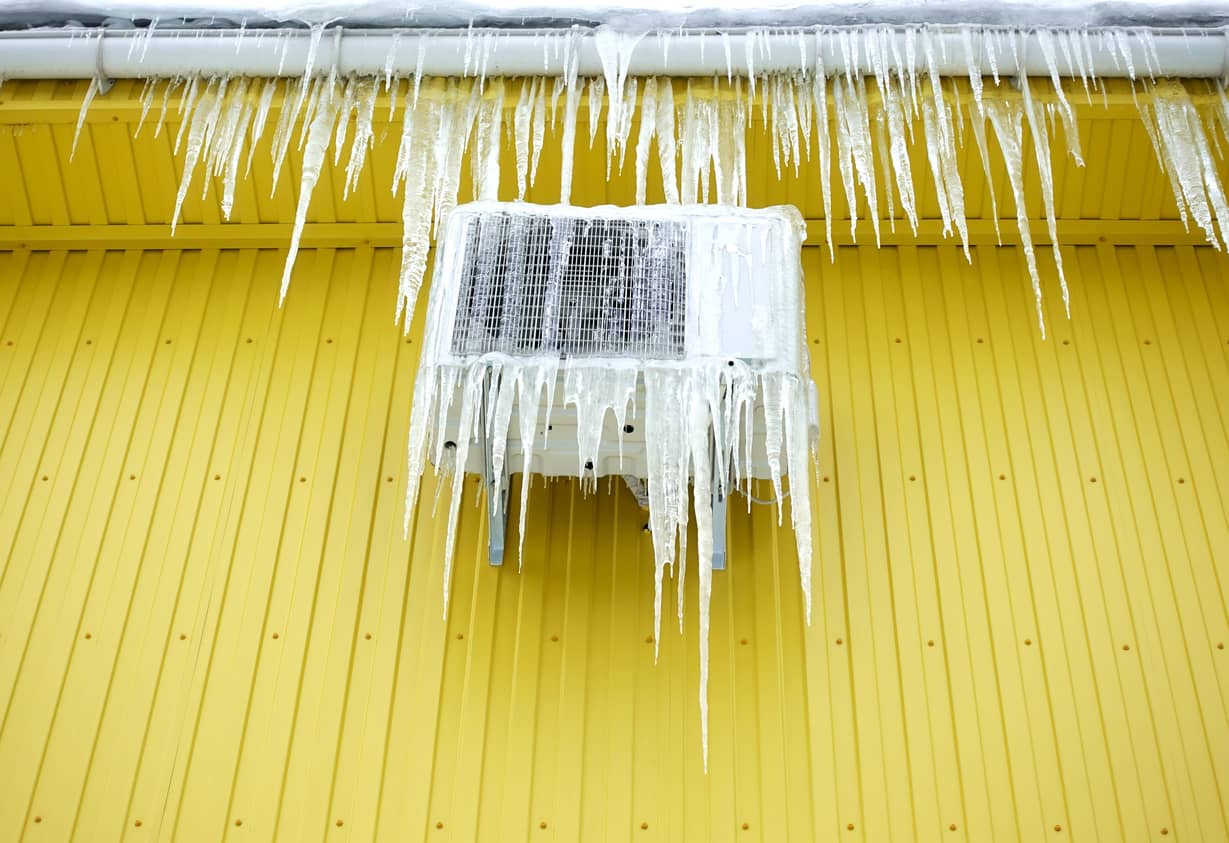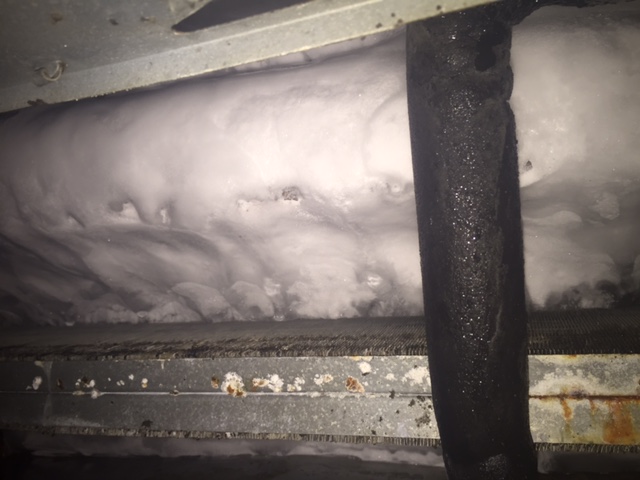Actions to Take When Your AC Pipe Freezes: Detailed Guide
Actions to Take When Your AC Pipe Freezes: Detailed Guide
Blog Article
They are making several good observations relating to Have a Frozen AC Line? Here’s How to Fix It as a whole in this article followed below.

Intro
Discovering that your AC pipe is iced up can be concerning, especially throughout hot summertime when you count on your ac unit one of the most. Comprehending what to do in such a scenario is important to stop further damages to your cooling system and ensure your convenience inside.
Comprehending the Causes
Several elements can add to the cold of an AC pipe. Comprehending these reasons can aid you address the issue properly.
Absence of Airflow
One usual cause of a frozen air conditioning pipe is inadequate airflow. When the airflow over the evaporator coil is restricted, it can cause the coil to drop below freezing temperature, resulting in ice formation on the pipe.
Reduced Refrigerant Levels
Not enough cooling agent levels in your air conditioning system can also result in a frozen pipeline. Reduced refrigerant levels can create the pressure in the system to drop, bring about the cold of moisture on the evaporator coil.
Winter Conditions
In cooler climates, freezing temperatures outside can add to the freezing of air conditioner pipes. If your AC system is not properly shielded or if there are leaks in the ductwork, cool air can infiltrate the system, creating the pipe to ice up.
Dirty Air Filters
Unclean or blocked air filters can limit airflow in your a/c system, resulting in different concerns, consisting of an icy pipeline. It's necessary to replace or clean your air filterings system consistently to guarantee appropriate air movement and prevent ice buildup.
Indications of a Frozen A/c Pipe
Identifying the indicators of an icy air conditioner pipeline is crucial for prompt activity.
Lowered Airflow
If you see a substantial reduction in air flow from your vents, it might indicate an icy pipe.
Ice Buildup on the Pipe
Visible ice buildup on the cooling agent line or the evaporator coil is a clear indicator of a frozen air conditioner pipeline.
Unusual Sounds from the Unit
Uncommon noises, such as hissing or bubbling, originating from your a/c unit can signify that there's ice present on the pipeline.
Immediate Actions to Take
When faced with an icy air conditioning pipeline, it's necessary to act promptly to stop additional damages to your cooling system.
Shutting off the a/c
The primary step is to switch off your air conditioning unit to prevent the system from running and intensifying the issue.
Checking for Blockages
Examine the area around the interior device for any type of obstructions that may be obstructing air flow, such as furniture or curtains.
Defrosting the Pipe
You can utilize gentle approaches like positioning towels taken in warm water around the icy pipe to help thaw it gradually.
Preventive Measures
Taking safety nets can assist avoid future events of a frozen air conditioner pipe.
When DIY Methods Fail
If your efforts to thaw the pipeline or address other issues are not successful, it's time to call in a professional.
Relevance of Hiring a Professional HVAC Technician
A certified HVAC service technician has the competence and devices essential to detect and repair problems with your AC system safely and properly.
Regular Maintenance Checks
Arrange normal upkeep talk to a specialist HVAC professional to ensure that your air conditioning system is running effectively.
Altering Air Filters
Routinely replace or clean your air filters to avoid air flow limitations and preserve ideal performance.
Protecting Exposed Pipes
If your air conditioning pipes are exposed to cool temperatures, consider insulating them to stop cold during winter months.
Seeking Professional Help
If DIY approaches stop working to deal with the issue or if you're unclear regarding how to proceed, it's ideal to look for assistance from a certified HVAC service technician.
Conclusion
Managing a frozen air conditioner pipe can be an aggravating experience, but recognizing how to react can help lessen damages and bring back convenience to your home. By understanding the causes, identifying the signs, and taking timely activity, you can successfully address the issue and stop future events.
Frozen AC Line: Why It Happens & What To Do About It
A frozen AC line can be a rather peculiar sight in a place like Phoenix, Arizona where nothing ever freezes. In this post, we’ll discuss what makes an air conditioner line frozen – and what you can do about it.
Dirty Air Filters
Did you know that you should be cleaning or replacing your air filters on a monthly basis? Failing to do this can result in airflow issues that, in turn, cause your evaporator coils and lines to freeze over. You’ll notice a buildup of ice on both components, although the buildup on your pipes will, of course, be more evident unless you open your air condition up to reveal the coils.
What To Do About It
Give your air filter a good cleaning if it’s reusable. If not, replace the filter outright. Next, switch your air conditioner’s fan setting on and leave it there for 2-3 hours. This will draw warm air in, helping to thaw your evaporator coil. You can also check out this article for some tips on cleaning the coils themselves if you’d like to speed the process up. Before you switch the unit back to its normal state, make sure the supply vents are completely unobstructed and free of dust or other debris.
If you keep having this issue even after replacing your filters regularly, contact a local HVAC repair company and have them inspect your evaporator coil, ductwork, and any other components that may be at fault. If you live in the Phoenix, Arizona area, give American Home Water and Air a call.
Low Refrigerant Levels/Leakage
What To Do About It
Contrary to what air conditioner “recharge” companies often tell their clients about refrigerant, it should never need to be simply refilled. You see, refrigerant runs in what experts refer to as a “closed loop.” Refrigerant really shouldn’t be leaving that loop. If it is, you’ve got a leak.
Paying someone to come and pump more refrigerant into your system (aka “recharge” it) isn’t the solution. Doing that will simply kick the can down the road. Besides, refrigerant leaks can be harmful to the environment and people in your home.
Rather, you need to take care of the leak with the help of a technician. Check out this article for some more information about dealing with air conditioners that are leaking refrigerant. Before you contact a technician, switch your thermostat to the off position. Then, switch the fan setting on and let it run for 2-3 hours so the unit can thaw.
Improper Temperature Setting
Improper temperature settings can also cause a drop in your air conditioner’s pressure. What many people don’t realize is that air conditioners are actually designed to run when temperatures have fallen above roughly 60 degrees Fahrenheit. If you run the unit when it’s cold outside, you’ll run into many issues, including frozen components.

I'm just very excited about Have a Frozen AC Line? Here’s How to Fix It and I am praying you appreciated the new article. Liked our piece? Please share it. Help somebody else check it out. Thanks for going through it.
This Resource Report this page